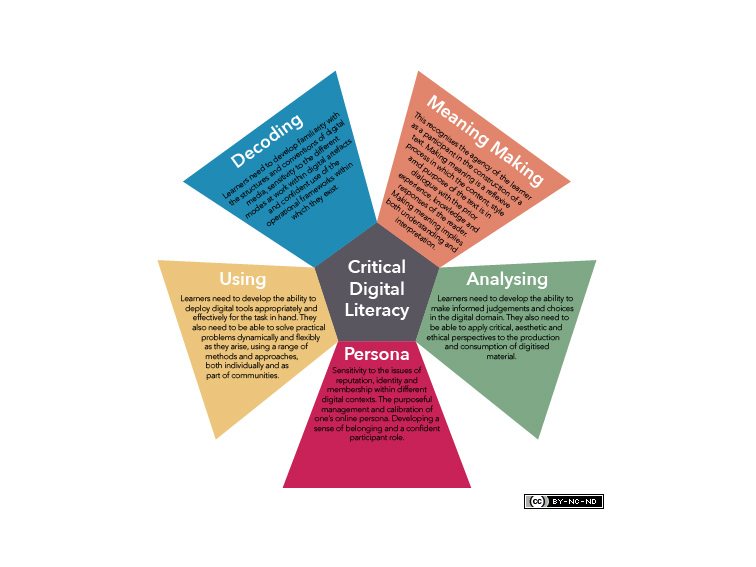
What Are The Dimensions Of Critical Digital Literacy?
by TeachThought Staff
Digital Literacy is increasingly important in an age where many students read more from screens than they do from books.
In fact, the very definition of many of these terms is changing as the overlap across media forms increases. Interactive eBooks can function like both long-form blogs and traditional books. Threaded email can look and function like social media. Email and texting and social media messaging are increasingly similar. Videos are live-streamed, then curated to a YouTube channel where a tool transcribes them into a podcast. And so on.
This is the modern digital era.
The above framework was developed by Juliet Hinrichsen and Antony Coombs at the University of Greenwich. Explaining its origins, they describe the model as “a framework to articulate the scope and dimensions of digital literacies. It is based on an established model of literacy which is underpinned by critical perspectives (the Four Resources Model of Critical Literacy, after Luke & Freebody). It has been adapted for the digital context.”
The framework is minimalist in design, forgoing any kind of analysis of each dimension, or examples of how readers may use them, but that’s part of its charm: At a glance, it refracts digital literacy rather succinctly.
5 Dimensions Of Digital Literacy
1. Decoding
Focus: the media–modes, structures, and conventions of digital media
2. Meaning Making
Focus: the reader–style, purpose, interpretation
3. Analyzing
Focus: the author–aesthetics, ethics, and related choices
4. Persona
Focus: a community–how others perceive the issue, topics, and context
5. Using
Focus: a marriage of self and community–problem-solving and data acquisition for a variety of authentic–and changing–purposes
5 Dimensions Of Critical Digital Literacy: A Framework; image attribution Juliet Hinrichsen and Antony Coombs at the University of Greenwich.